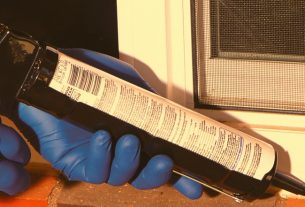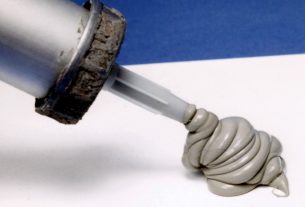3 Steps for Installing Window Seals
Contents
Step 1: Prepare your window
Step 2: Measure the window rebates
Step 3: Case 1: Installing a foam or rubber seal
Step 3: Case 2: Installing a silicone seal
Step 3: Case 3: Install a plastic V-seal
Step 3: Case 4: Install a metal seal
The joinery of an old window must be caulked by installing insulation gaskets on windows between the sash and the frame. It is easy and reduces heat loss while increasing your acoustic comfort.
Several techniques are available to you for re-sealing your windows, depending on the size of the gaps between the frame and the sash of your window.
Attention: leave the air vents of your windows free. They allow the air in your home to be renewed, thus contributing to its purification.
1. Prepare your window
Wash the sash and frame of your window or door with a sponge soaked in alkaline detergent.
If necessary, remove flaking paint or other dirt with a wire brush.
Check the drainage grooves in the frame for blockages. Do the same for the window vents.
Degrease the frame where the insulating seal is installed with a cloth and methylated spirits.
Allow drying before fitting the seals around your window.
2. Measure the window rebates
Insulating gaskets are available in different sizes, so you should choose one that best fits your frame and the size of the gaps between the frame and the sash.
Measure the height of the window rebates (the vertical part of the frame) to best fit the seal’s dimensions to your window.
Choose a thick insulation seal if the gaps are irregular.
On the other hand, a thin seal is sufficient for small gaps.
3. Case 1: Use a foam or rubber seal
The self-adhesive foam seal (polyethylene or polyurethane) is inexpensive but not very strong and needs to be changed regularly.
The rubber seal is effective and resistant but a little more expensive. It comes in the form of a profiled adhesive roll, to be split or juxtaposed, depending on the width to be covered.
In both cases, the seal is applied to the vertical part of the frame, at the top, bottom and sides.
Apply the insulating joint carefully, removing the self-adhesive protection as you go along.
Cut the seal with a cutter at each corner.
Then check that the window closes completely.
3. Case 2: Install a silicone seal

The silicone seal, a little trickier to install, makes it possible to achieve a window seal that perfectly fits the space between the frame and the sash.
Using a spray gun, apply a bead of silicone sealant to the 4 edges of the window, generously filling in the gaps.
Place the release strip on top and cut it in the corners with a cutter.
Close the window.
Remove the release tape after 24 hours: the seal should come off easily. If not, wait a little longer.
If necessary, deburr with the cutter.
3. Case 3: Installing a plastic V-seal
The plastic V-seal is sold in rolls, and the profile is folded to give it its V-shape. It comprises glued fixed and movable parts that you can lift to close the gap between the window frame and the sash.
This type of seal, designed for regular days, is very durable.
Apply the adhesive side against the frame, leaving the other side free.
Position the open part of the seal outwards, i.e. the point of the V towards the window.
Fold back the free part of the seal as you glue.
3. Case 4: Install a metal gasket
The metal V-seal, sold in rolls, is a flexible strip that acts like a spring.
It comprises fixed nailed and movable parts that you can lift to close the gap between the window frame and the sash.
This insulating seal is very resistant and has a spring pressure, ensuring it is very effective.
Cut the gasket pieces to the size of the frame with scissors beforehand.
Nail the fixed part of the metal seal into the rebate with the flat-headed nails supplied with the seal, pointing the lift-up part towards the outside of the window.
You can also nail the fixed part of the V-gasket to the window sash, with the lift-up part facing inwards.
Then lift the movable part of the metal seal with a spoon to adjust the opening angle.
Check it regularly. With time the metal seal will close, then lift.
Caution: this type of seal is difficult to find in the trade.
Materials for fitting insulation seals to windows
Alkaline detergent
Bucket
Sponge
Wire brush
Cloth
Rubbing alcohol
Pair of scissors
Cutter
Hammer
Foam gasket
Rubber gasket
Sealing gun
Demolding tape
Plastic V-gasket
Metal gasket



